Sciatica appears to be a buzzword when it comes to low back pain. Rarely does a day in the life of a chiropractor passes without a patient presenting with sciatica or telling a story of past sciatica woes. In fact, research tells us that 10-40% of adults will experience sciatica at some point in their lifetime. But what exactly is sciatica, and is it as common as it sounds? Let’s dive in.
What Are the Symptoms of Sciatica?
The definition of sciatica is “pain and paresthesias in the sciatic nerve distribution or an associated lumbosacral nerve root.” Fancy, I know. The sciatic nerve is the largest nerve in the body and can be irritated in multiple points along its travels from the low back down to the foot. Chances are, if you have experienced a bout with severe sciatica, you shiver just thinking about it. I will include a list of symptoms that our patients often complain about with sciatica.
Most Common Sciatica Symptoms
- Lower back pain
- Pain in the buttocks or leg that worsens when sitting
- Hip pain
- Burning or tingling sensation down the leg
- Weakness, numbness, or difficulty moving the leg or foot
- A sharp pain that may make it difficult to stand up or walk
- Pain that radiates down one side of the body, from the lower back into the leg
- Occasionally, pain in the toes or foot
All of these sciatica symptoms are equally unpleasant to experience. Our Smithtown chiropractors are skilled in treating this condition and helping you get out of pain fast.
Meet the Sciatic Nerve
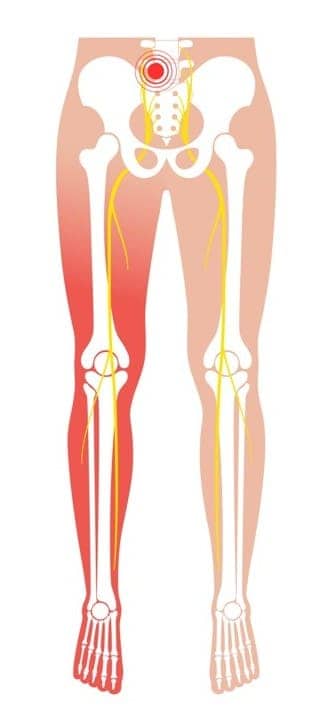
Sciatica can cause significant pain, numbness or weakness into the leg, as well as heightened or diminished sensations. The sciatic nerve is composed of the L4 through S3 nerve roots and can be up to 2cm in diameter. Of course, a nerve that large must play many roles.
The sciatic nerve provides electricity to the hamstrings, adductors, calf muscles, lower leg and even some intrinsic foot muscles. Additionally, it feeds sensation to the posterior and lateral lower leg and the plantar aspect of the foot.
Sciatic Pain Examples from Our Patients
I recently had a patient present with severe sciatic pain into her right leg. She expressed that she couldn’t wear a sock on her right foot because it hurt too badly.
Or how about a 34 week pregnant mama-to-be who presented recently with “burning” from the posterior thigh down to the calf.
I could go on for pages with different clinical presentations we have seen from this nerve, but let’s talk about why this happens.
What Are the Causes of Sciatica?
So now we know what the sciatic nerve is, where it travels and what it supplies. But what causes irritation of this big nerve, and what can we do to prevent it?
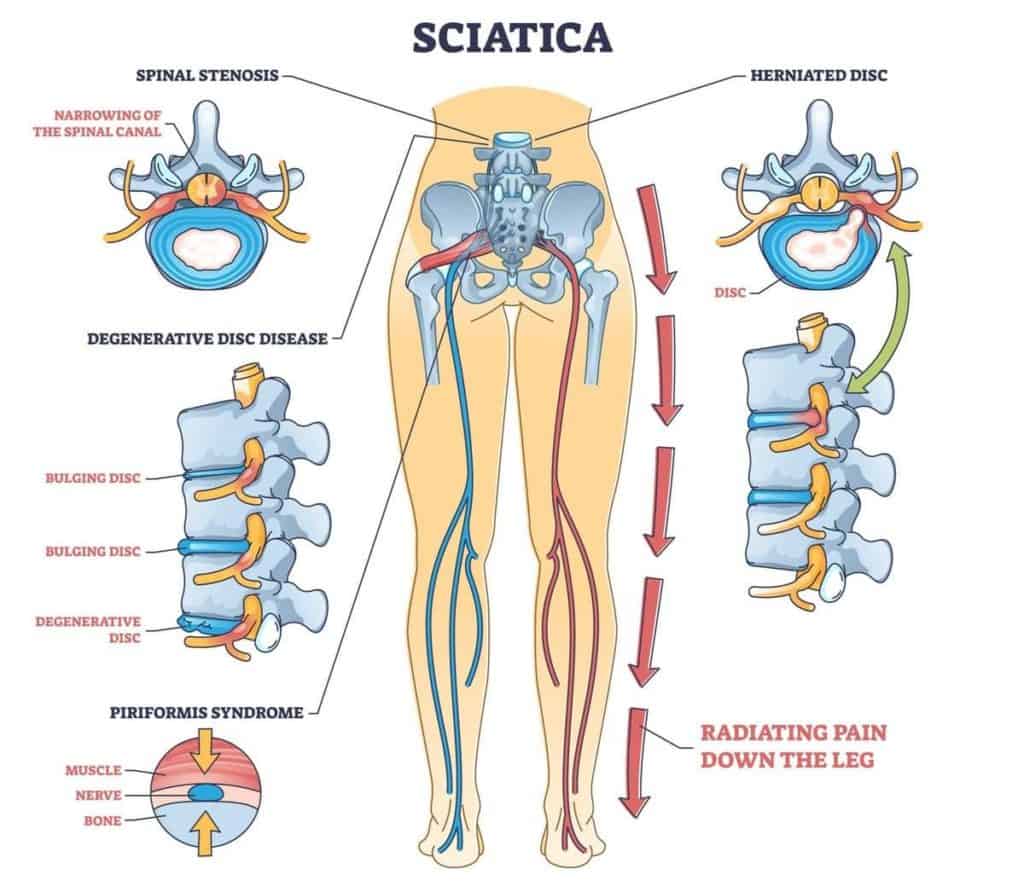
Bulging/Herniated Discs and Stenosis
The most common cause of sciatica is a herniated or bulging lumbar disc. If you have ever had an MRI of the lumbar spine, you may be aware of your own disc herniations.
Does that mean you have sciatica? Absolutely not! There are plenty of cases of asymptomatic disc herniations in the human spine. Sciatica is diagnosed based on symptomatology, not structure. So unless you are experiencing any of the symptoms described above, don’t fret.
Sciatica can also come from lumbar spine stenosis, which we typically see in the older crowd. Disc herniations and stenosis are the two most common etiologies of sciatica originating in the lower back.
The Piriformis Syndrome
But as we learned earlier, the sciatic nerve is quite large and travels a long distance. To reach the leg, it must travel through the buttock region underneath a flat and narrow muscle called the piriformis. The piriformis originates on the sacrum and attaches to the greater trochanter of the femur. If the piriformis is tight, it can compress the sciatic nerve as it passes through to reach the lower extremity, thus causing sciatic nerve symptoms. This is called Piriformis Syndrome.
Sciatica Pain During Pregnancy
Sciatica pain is a very common reason why soon-to-be mothers come to our chiropractic office during pregnancy. The physiologic adaptations that the female body makes throughout pregnancy are no simple feat and they can bring many discomforts, including sciatica.
- Hormonal Changes: During pregnancy, the body releases a hormone called relaxin, which helps to prepare the pelvis for childbirth by relaxing ligaments. However, this relaxation can also lead to shifts in the joints and alignment of the spine, potentially putting pressure on the sciatic nerve.
- Weight Gain and Posture Changes: The added weight and change in the center of gravity during pregnancy can alter posture and put additional stress on the spine. This increased pressure can irritate or compress the sciatic nerve, leading to sciatica symptoms.
- Uterine Pressure: As the uterus expands, it can put direct pressure on the nerves in the lower back and pelvic area, including the sciatic nerve, especially in the third trimester.
- Fetal Position: The position of the baby, especially in the later stages of pregnancy, can also affect the sciatic nerve. The baby’s head pressing against the nerve can cause bouts of sciatic pain.
- Postpartum Sciatica: Even after childbirth, new mothers might experience sciatica. This can be due to the physical strain of labor, postural habits while caring for a newborn, or pre-existing spinal issues exacerbated by pregnancy.
Muscle Spasms and Trigger Points
you know how sometimes a muscle in your body suddenly tightens up and it feels like you can’t relax it? That’s a muscle spasm. They can spring up out of nowhere and can be quite a pain—literally. If these spasms happen in your lower back or your buttocks, they might be pinching your sciatic nerve. That’s when you start feeling that familiar sciatica discomfort. These spasms can be caused by a whole range of things, from simple muscle fatigue to more complex issues like spinal conditions or nerve problems. And let’s not forget about trigger points – those tender spots in your muscles, especially in the piriformis muscle in your buttocks (see the section about the Piriformis Syndrome above ⬆️). When these spots get irritated, they can also press on your sciatic nerve, mimicking sciatica symptoms.
Your lifestyle plays a big role too. If you’re lifting heavy stuff the wrong way, or if you’re stuck in a chair all day with poor posture, these things can trigger those muscle spasms as well. Even stress can make your muscles tense up and start a chain reaction leading to sciatica pain.
How to Find The True Cause of Your Sciatic Pain
With anatomy like that, you can imagine that a large part of our role when somebody enters the office complaining of sciatic symptoms is to figure out the origin. A series of orthopedic tests will help us determine if the pain is originating in the lumbar spine or piriformis region.
Oftentimes, there will be a complaint of associated low back pain or glute/hip pain to accompany the lower extremity discomfort. I often tell my patients to pay attention to what irritates pain and what does not. The more information you can tell us, the more pieces of the puzzle we have, and therefore the quicker we can zone in on the issue. But as always, the best bet is to get assessed. By pinpointing the origin of dysfunction, treatment can be more specific and thus, more effective!
Can a Chiropractor Help with Sciatica?
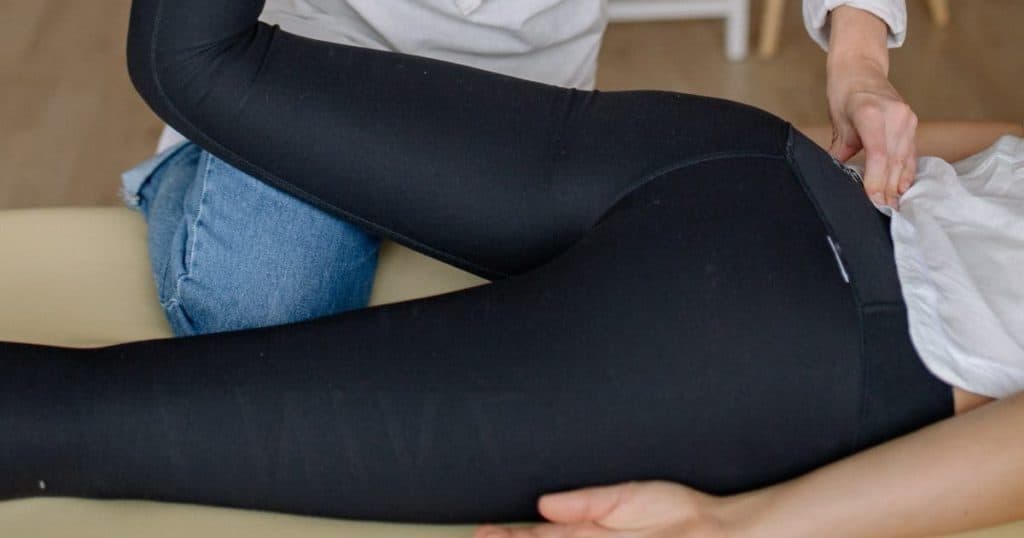
The short answer is “YES!”, a chiropractor can help with sciatica.
I learned early in my career that if you can relieve sciatic nerve pain for a patient, they will love you forever. My mom experienced sciatica when pregnant with me (30+ years ago) and still raves about her prenatal chiropractor fixing it. I may be biased, but chiropractic care is a great first step in getting relief. Sciatica isn’t just about that pain shooting down your leg; it’s often a symptom of something else going on in your body, like a misalignment or pressure on the sciatic nerve.
Sciatica Pain Relief Protocols in the Chiropractic Office and At Home
At True Sport Care we utilize a unique approach to sciatica treatment that starts by identifying the root cause of your pain.
Specific treatment plans vary based on the origin of pain, but oftentimes it follows the same recipe. A visit to True Sport Care chiropractor for sciatica will often consist of the following:
- Manual muscle work. Manual muscle work, such as massage therapy, myofascial release or instrument-assisted soft tissue mobilization, can be highly beneficial in alleviating sciatica pain. This hands-on approach focuses on relaxing tense muscles and relieving pressure points that may be aggravating the sciatic nerve. Working directly on the affected muscles, especially in areas like the lower back and buttocks, helps to ease muscle spasms and reduce inflammation. This not only provides immediate pain relief but also improves flexibility and circulation in the affected areas.
- Low back and hip chiropractic adjustments. Through precise and controlled spinal manipulations, we can relieve the pressure on the sciatic nerve, resulting in an immediate reduction of pain and discomfort. These adjustments not only help in reducing inflammation and improving nerve function, but they also enhance spinal mobility and promote better overall spinal health. Regular chiropractic care can lead to long-term pain relief, improved posture, and enhanced body mechanics, reducing the likelihood of future episodes of sciatica. This hands-on, non-invasive therapy is particularly effective as it treats the root cause of sciatica pain rather than just masking the symptoms.
- At-home exercise prescription. Our approach to sciatica pain relief includes an at-home exercise program so that you can not only find immediate relief but also prevent the reoccurrence of sciatica in the future. Simple exercises will help you develop stronger back and core muscles which result in better spinal alignment and less pressure on your sciatic nerve. Specific stretches help to loosen up tight muscles in your lower back, hips, and buttocks – areas that can directly impact your sciatic nerve. Not only does this provide immediate pain relief, but it also improves your flexibility and range of motion. This combination of strength and flexibility reduces the likelihood of future sciatica flare-ups. It’s a proactive approach, not just treating the pain when it happens, but also working to prevent it from coming back.
The combination of these three is intended to relieve pain, mobilize the joints (a “reset”, if you will), and then strengthen and stabilize to prolong periods of relief.
If you know us, you know that we love our patients….. but don’t want to see you a lot.
- Our number one priority is to figure out what went wrong and get you out of pain.
- Number two is to figure out how to ensure this does not happen again. I often provide my patients with what I call my “Oh Sh*t Protocol”. The purpose of this protocol is that if one day you find yourself saying oh sh*t, my pain is coming back – you have assigned exercises and stretches specific to you that you can initiate immediately. If this fails to provide relief, then you come back in for a tune-up.
therapeutic exercises for the Early Stages of Sciatica Rehabilitation Treatment
1. Diaphragmatic Breathing
2. Core Stabilization
3. Piriformis and Glute Stretches
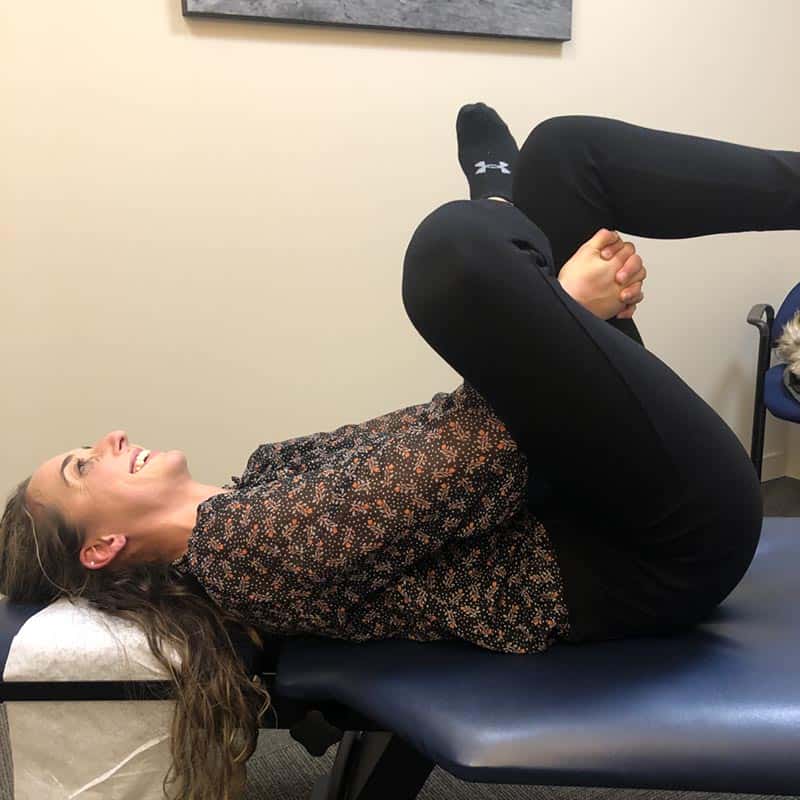
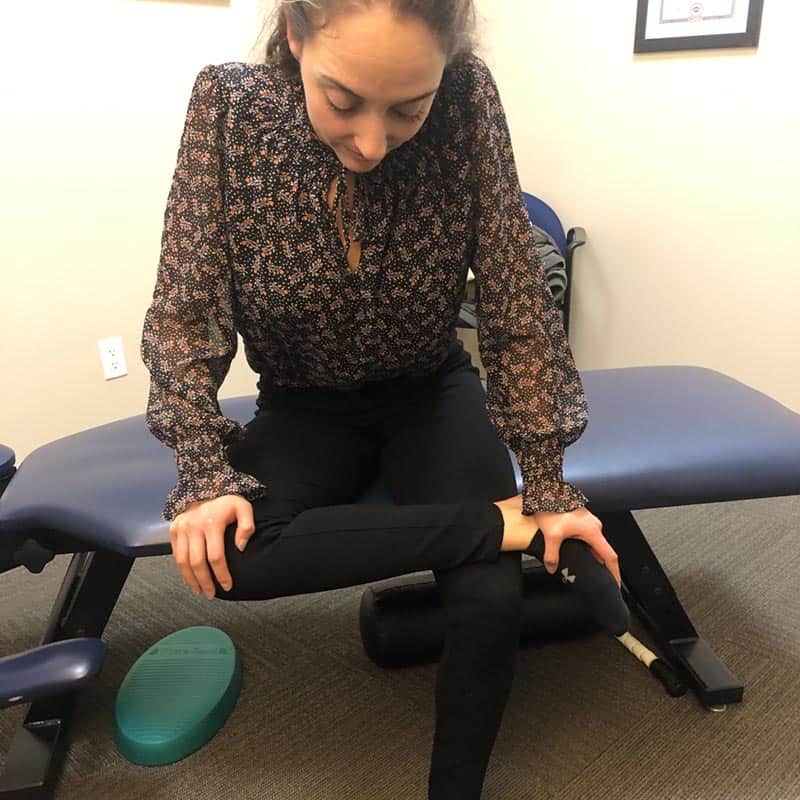
4. Piriformis Exercises
These are slow and intentional and prioritize decreasing pain.
As pain diminishes, exercises can ramp up. Depending on the patient and their goal, they may progress to tempo movements (box squats, goblet squats), dead bugs (legs only, arms only, combination of both), hamstring strengthening (good mornings, Romanian deadlifts), or carries (farmers, unilateral). Throughout all exercises, we remain focused on breath and muscle engagement, as well as strengthening and stabilizing the core, glutes and extremities. Trust the process, start slow and controlled, and earn your right back to activity. And of course, consult a doctor for assistance throughout the process.
Contact a Sciatica Chiropractor Today and get out of Pain!
If you are a frequent flier when it comes to sciatica, or the symptoms in this article sound oddly familiar, just know this is not a life sentence. With the right team (cough cough, hello ;-)), there are exercises, stretches, treatments, modifications and so forth that will keep you on the move. If you are located in Smithtown, St James, Nesconset or surrounding areas and are ready to say “goodbye” to sciatica, give our Smithtown chiropractic office a call. We preach prevention at True Sport Care and with the correct recipe, you will be able to keep doing what you love pain-free!
References
- Systematic review of studies suggesting that chiropractic care can help with sciatica and other types of back pain. Alireza Salehi, MD, MPH, PhD, Neda Hashemi, MSc, Mohammad Hadi Imanieh, MD, and Mahboobeh Saber, MD, PubMed.
- Sciatica. David Davis; Kushagra Maini; Arvind Vasudevan, PubMed.
- The clinical features of the piriformis syndrome: a systematic review. Kevork Hopayian, Fujian Song, Ricardo Riera, and Sidha Sambandan, PubMed.






